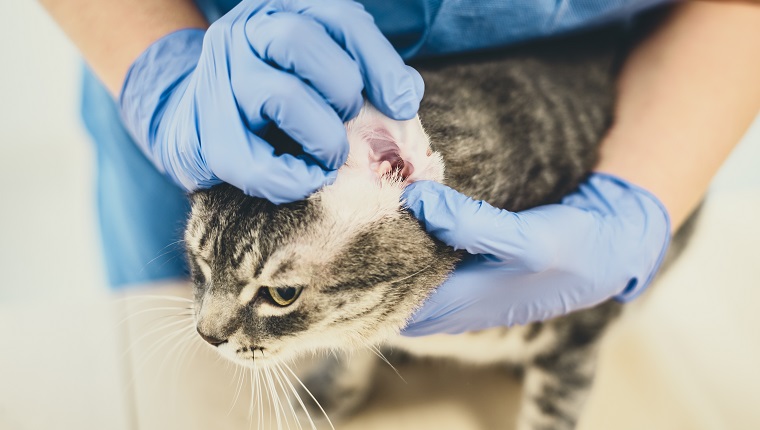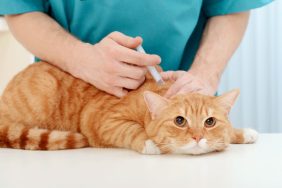Demodectic mange in cats, also sometimes referred to as demodicosis, is a medical condition that produces inflamed skin that can, in turn, lead to sores, itching, and hair loss.
The condition is caused by tiny mites called Demodex mites. These mites are fairly common on the skin of mammals, and they mostly do not cause symptoms to appear. However, when illness or stress compromise the immune system, the mite population may grow out of control and cause issues with the skin and hair.
If you see signs that your cat might be suffering from any type of skin condition, then you must consult your veterinarian for a proper diagnosis and advice. Here’s what you should know about the symptoms, causes, and treatments of demodectic mange in cats.
Symptoms Of Demodectic Mange In Cats
Demodectic mange in cats can bring on a number of symptoms that depend on which species of Demodex mites are involved. Symptoms often appear around the eyelids, head, neck, and flank.
Demodex Gatoi mites can produce the following symptoms:
- Itching
- Losing hair
- Sores
- Scaling skin
Demodex Cati mites are capable of producing the following symptoms:
- Shaking the head a lot
- Crusty patches of skin
- Ear debris
- Losing hair
- Scaling skin
Causes Of Demodectic Mange In Cats

The cause of demodectic mange in cats is either the presence of Demodex Gatoi mites or Demodex Cati mites. The former mites can affect all cats, while the latter mites seem to mostly infect cats with immune system issues, such as diabetes.
Demodex Gatoi is also potentially contagious and can spread between cats in the same household.
Additionally, a third, rarer Demodex mite is sometimes found; although, this mite has yet to be properly named.
Veterinary Treatments
If you see signs that your cat is suffering from demodectic mange, your veterinarian will want to carry out a full physical examination and also pay special attention to any signs of mites.
The vet will use skin scrapings, fecal tests to look for eggs, and ear swabs to try to identify a case, as well as the specific mites causing it.
Treatment usually takes the form of a series of lime-sulphur dips that are carried out once a week for up to six weeks. However, in many cases, the condition clears up on its own spontaneously.
In some cases, vets might also prescribe oral and topical medication. As always, if your vet prescribes your cat any medicine, then it is vital that you stick to the precise dosage and frequency instructions along with completing the full course of treatment.
Keep up with vet visits so that your vet can monitor your cat’s condition.
You can also help prevent mange by generally keeping your cat in good health and keeping them clean without drying out their skin. Talk to your vet about your cat’s health and grooming routine.
Has your cat ever suffered from demodectic mange? How did you and your vet treat it? Tell us all about it in the comments below.









